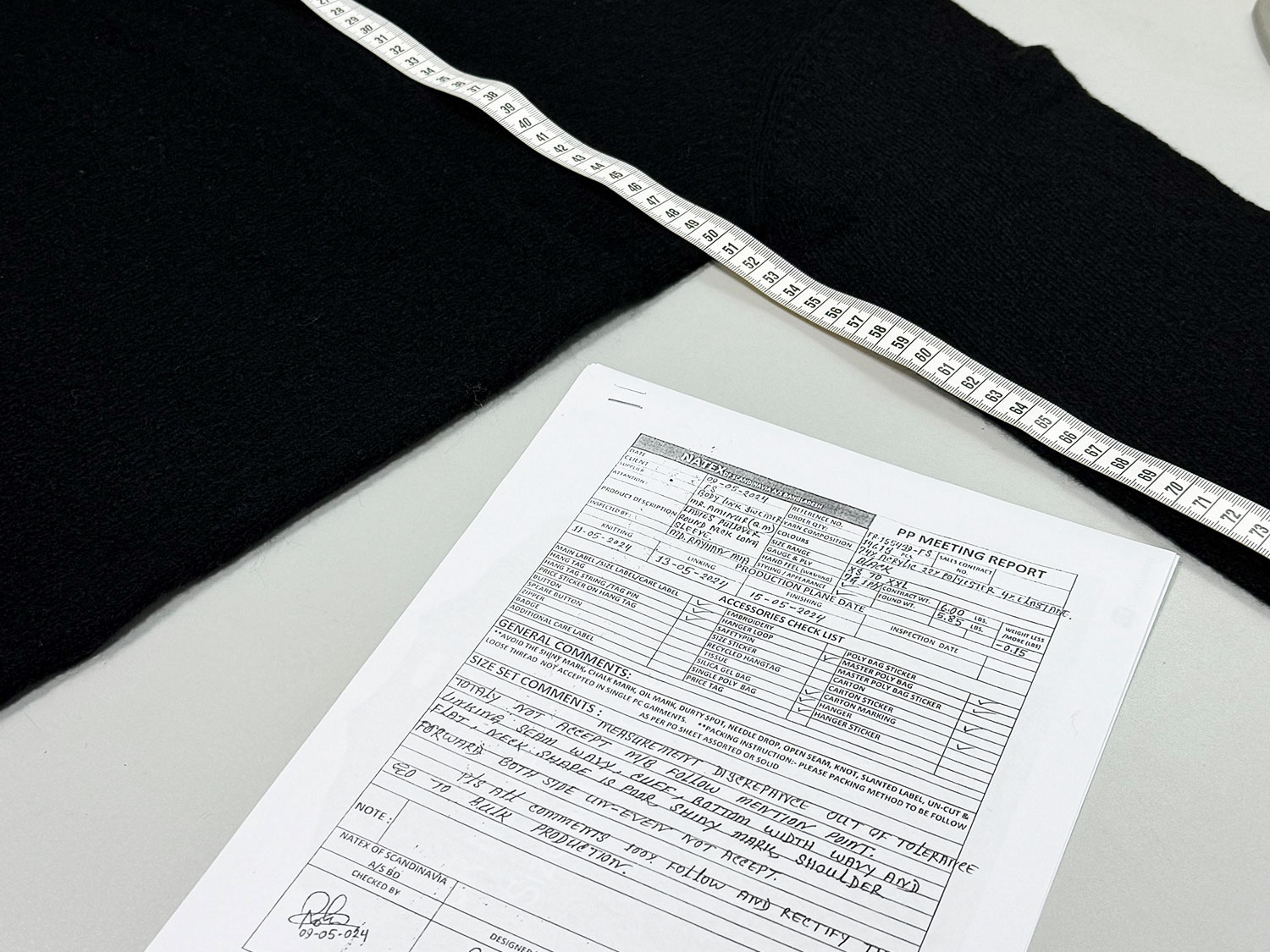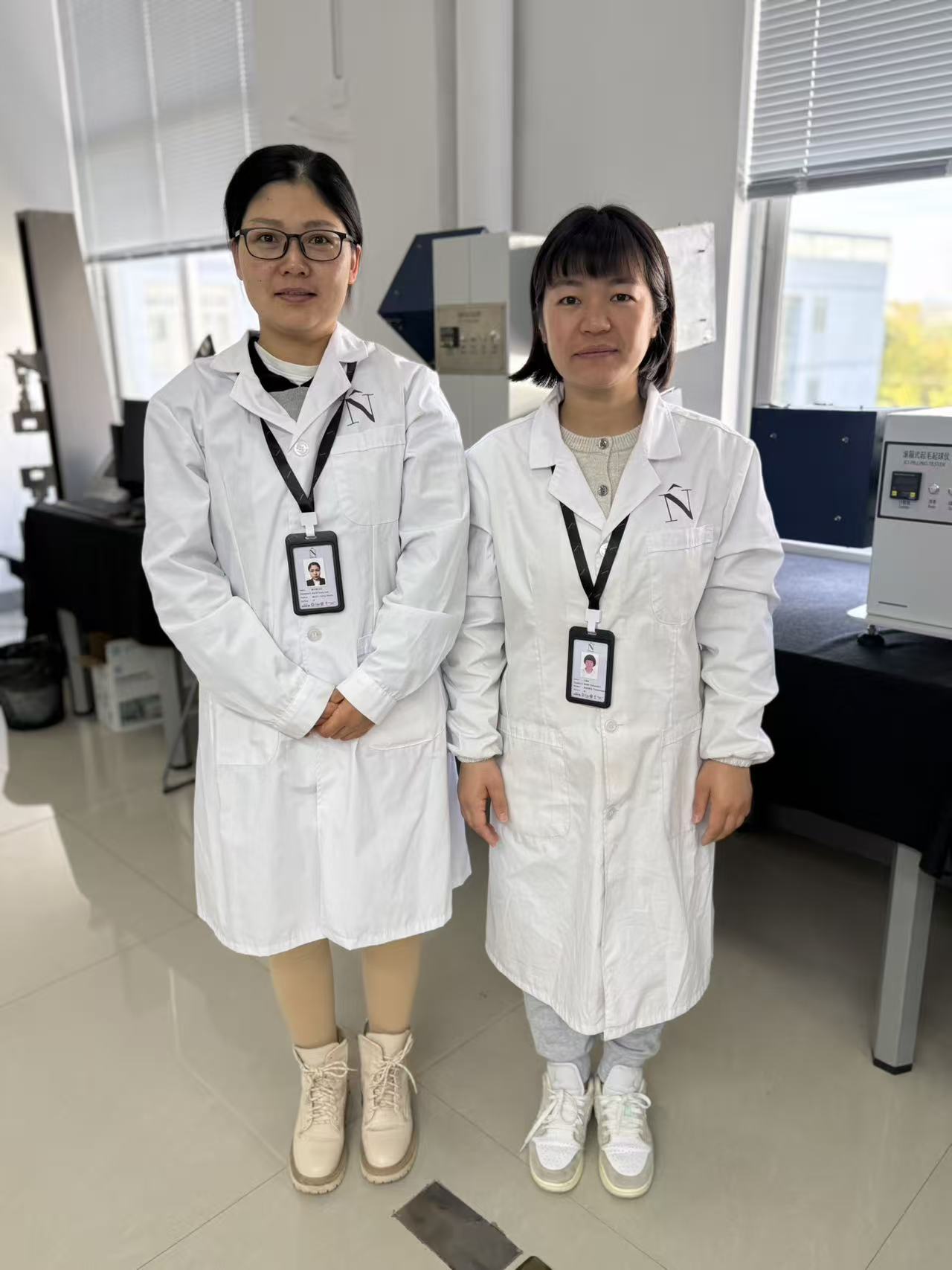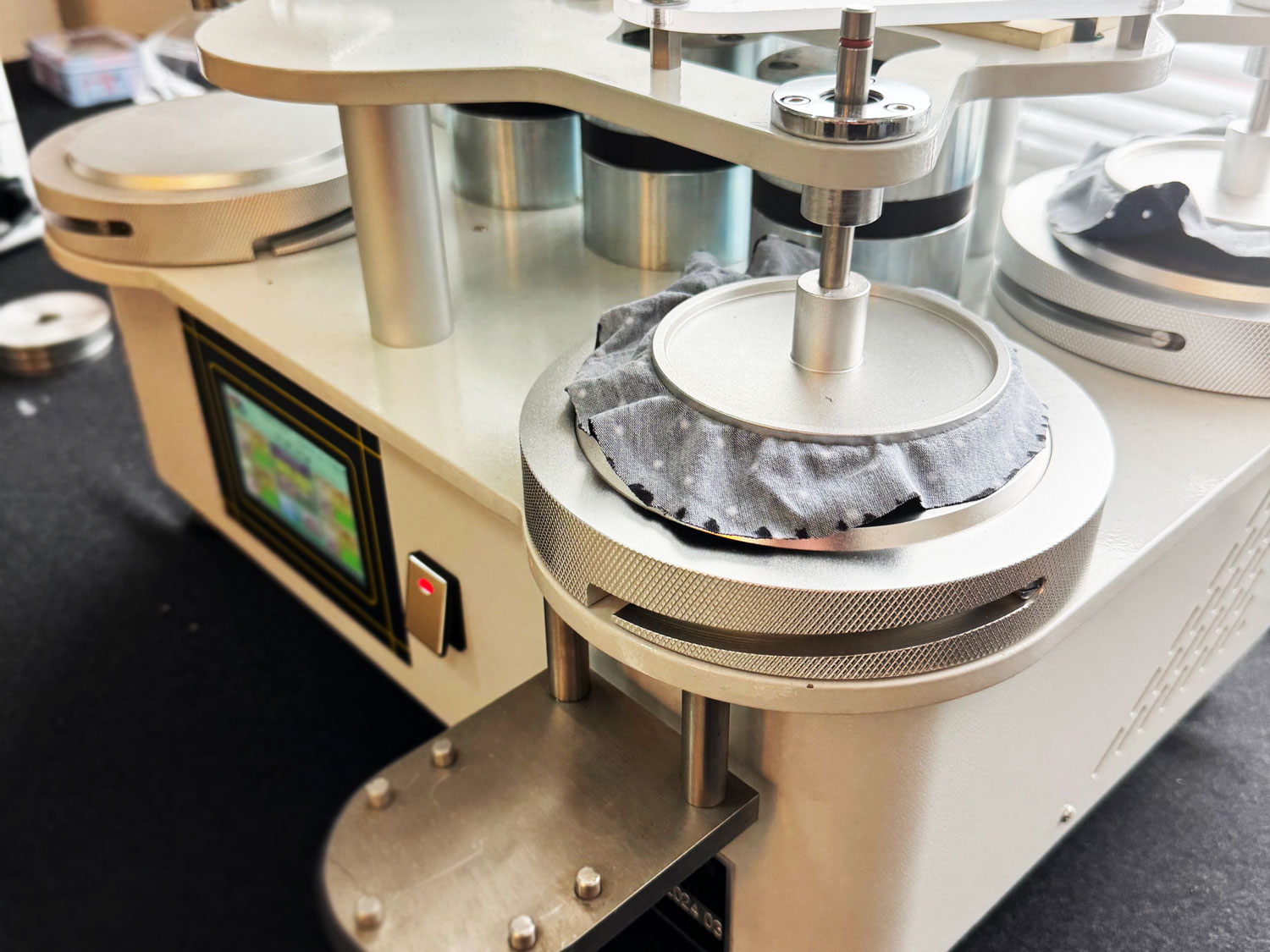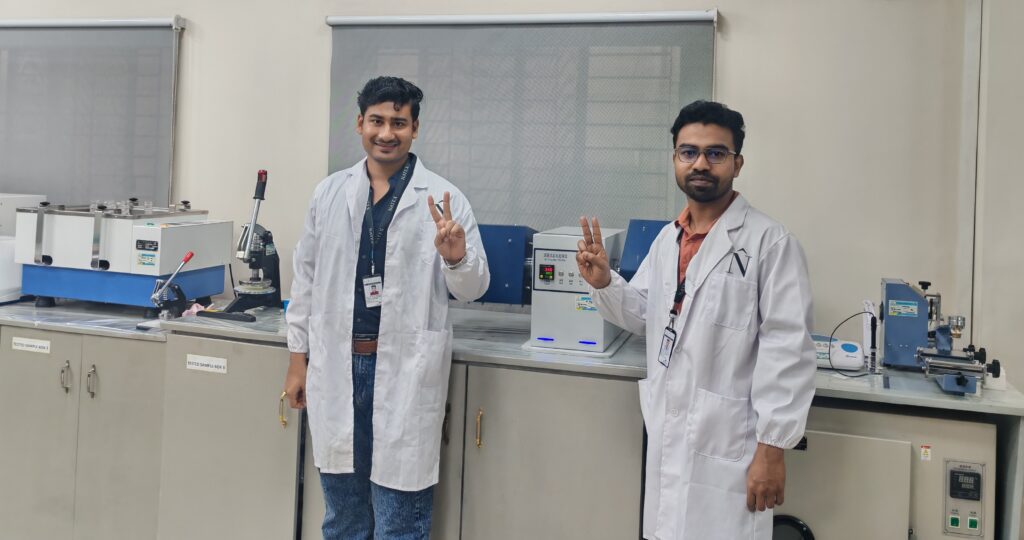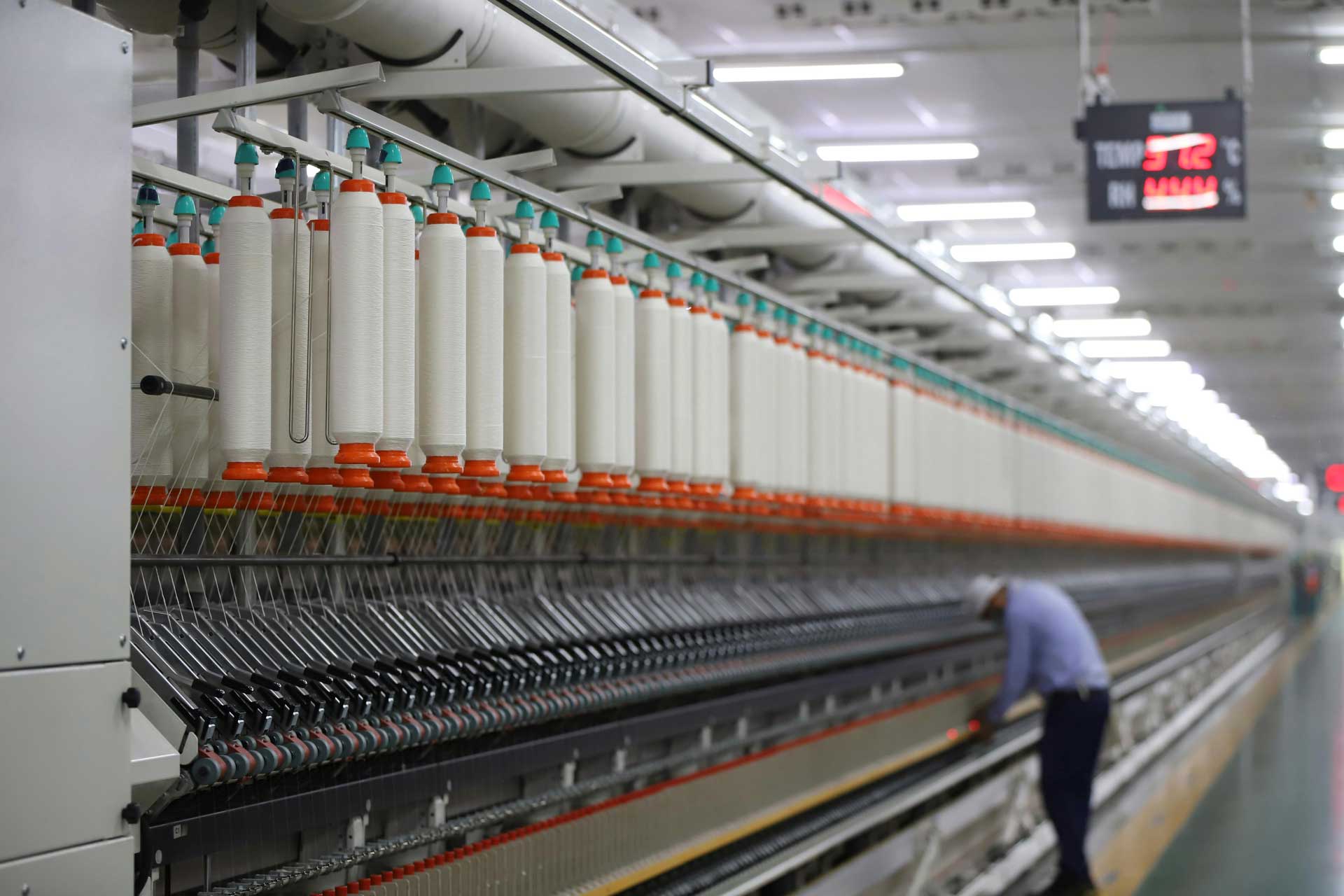
Quality Assurance Procedures
At Natex, we are committed to maintaining the highest quality and control standards throughout all our processes. To ensure that the quality of our products is upheld, we implement rigorous in-house checks. Here’s an overview of our quality assurance protocols.
Fabric and Yarn Quality Control
We employ a 4-point inspection system for all yarn and fabric sourced from China, India, or locally. Our comprehensive testing and checking processes include:
- Our Fabric/yarn Production Stages Quality assurance
- Pre-Shipment Inspections: Inline checks are conducted before any fabric or yarn is dispatched to dyeing facilities.
- Final Inspection: Before shipment to our Cut, Make, and Trim (CMT) units in Bangladesh or India, all fabric and yarn undergo a final 4-point check.
Our Garment Production Stages Quality assurance
Pre-Production Monitoring (PPM)
Full PPM reports are generated before the commencement of any bulk production.
Early Stage Inspection
Our Inline checks are conducted during the initial stages of production.
Mid-Production Inspection
Our Mid-inline checks are carried out after 30% of the production is complete.
Pre-Final Inspection
Checks are conducted before the final stage of bulk production.
Final Quality Audit
We adhere to the AQL (Acceptable Quality Limit) 2.5 standard for final inspections.
Our Inhouse Testing Center / Laboratory in Bangladesh
Our in-house testing center/laboratory in Bangladesh is operating under the concept of ISO 17025, and we are working towards official accreditation. Our staff in Bangladesh is already certified by ISO 17025, Marks and Spencer, C&A, Debenhams and Tesco. We are able to implement ISO, AATCC, ASTM, JIS, and BS EN ISO. So, we are always monitoring and maintain as per our customer’s requirement on Colorfastness and physical, Mechanical and Chemical tests. Always we are encouraging our Chinese, Indian and Bangladesh suppliers to use certified and RSL-free dyes and Chemicals and monitor them through Oekotex, ZDHC and others”. Also, we are not compromise with the visual colour assessment. We are Using the Lightbox with D65, TL84, UV, F, and SWF light sources in a dark room. Carry on our visual assessment from Lab-dip to bulk to postpone any shade variation & Metamerism.
Data Management
All quality reports are uploaded to our ERP (Enterprise Resource Planning) system and can be shared with our buyers as needed.
Natex inhouse Testing Lab
We’ve invested significantly in comprehensive in-house testing facilities in our offices in China and Bangladesh. These facilities ensure that all fabrics and yarn undergo rigorous testing before being sent to our CMT units. This is a critical part of our commitment to ensure full traceability in our workflow.
Our tests are conducted by ISO-certified staff experienced in monitoring and testing our fabrics, yarns, and finished garments. This ensures our quality control is maintained from start to finish, with each step documented to enhance traceability.
In-House Lab Testing Equipment list
- Conditioning Cabinet to find out the test results more accurate.
- Light Box (D65,TL84,CWF,UV,F).
- Dark Room.
- Spectrophotometer.
- Front Loader Washing machine.
- Tumble Dryer.
- Dry and Wet rubbing test machine.
- Tensile strength tester.
- Wash Wheel
- ICI Pilling Tester.
- Martindale Pilling & Abrasion machine.
- pH Meter.
- Weighting machine.
- Oven or Incubator.
- Perspirometer. (ISO/AATCC).
- Bake-out furnace.
- GSM Cutter.
- Attachment pull test machine.
- Fabric tear tester with drop hammer (Configuration: Small LCD)
- Surface to surface resistance tester
- Electronic fabric strength machine
- Tear Tester
- Surface to surface resistance tester
Chemical Testing Procedures
Chemicals play a crucial role in enhancing the properties and performance of textiles and clothing. They serve various functions, such as dyeing, printing, finishing, and creating specific textures or effects, like water resistance, increased GSM, and improved color fastness.
However, many of these chemicals, including dyes, auxiliaries, printing, and finishing agents, contain restricted hazardous substances.
Impact on Health and the Environment
The chemicals in our clothing and textiles can affect our health and the environment. These substances also impact textile and garment workers in production facilities worldwide. Hazardous chemicals such as Azo, APEO, HVSC, Formaldehyde, pentachlorophenol, PFAS, cadmium, and lead can cause health issues like skin irritation, allergies, and rashes.
Research has shown that hundreds of chemicals are present in our clothes, potentially contaminating textiles and affecting human skin.
Our Commitment
At Natex, we prioritize the safety and well-being of our customers and the environment. We actively encourage and monitor all our suppliers to use RSL-free, ZDHC, Bluesign, and Oeko-Tex certified dyes and auxiliaries during dyeing, finishing, and printing processes. Additionally, we ensure that all yarns, threads, fabrics, trims, and accessories undergo rigorous testing by our in-house and third-party laboratories. Only items that pass these tests are approved for use.
By following these stringent procedures, we can confidently assure our customers that Natex products are free of hazardous substances.
We are committed to delivering safe and high-quality products to our customers.
This text reflects your commitment to quality control and safety while clarifying that Natex takes extensive measures to ensure products are free of hazardous substances, without assuming full responsibility for all chemicals used.
Testing Protocols
- Visual & Instrumental Shade Assessment.
- Colorfastness to Rubbing.
- Colorfastness to Water.
- Colorfastness to Washing.
- Colorfastness to Perspiration.
- Colorfastness To sea water.
- Colorfastness To Phenolic Yellowing.
- Colorfastness to Saliva.
- pH.
- Martindale Pilling & Abrasion.
- ICI Pilling & Snagging.
- Bursting Strength.
- Garments Weight.
- Print Fastness.
- Nickel Release.
- Appearance after wash.
- Dimensional Stability to Washing.
- Spirality.
- Stretch and Recovery.
- Attachment pull test.
- Shade Checking.
- Yarn Count.
- TPM.
- Seam Slippage Test
- Seam strength test
- Tensile test
- Tear test
- Fabric resistance test
- Salt Spray Test
- Colorfastness to dye transfer test.
All these tests are performed on every batch of fabric and yarn in both our China, India and Bangladesh offices, ensuring consistent quality and complete traceability of the final garments.
This addition highlights the importance of traceability in your quality assurance process, which can be a key selling point for clients concerned with supply chain transparency.


